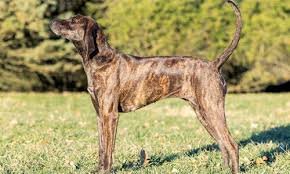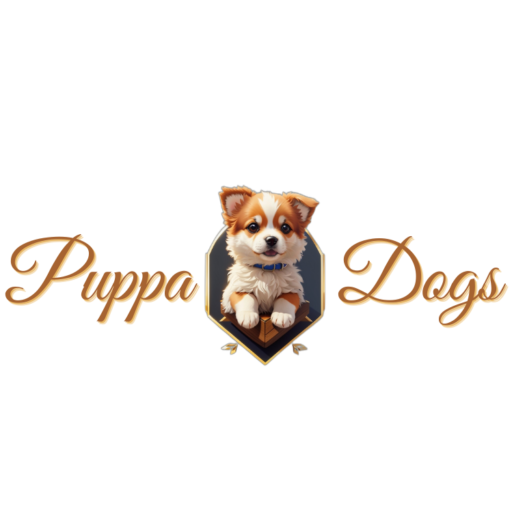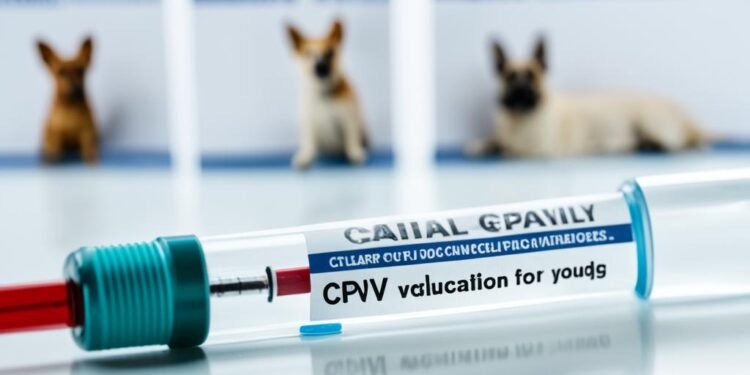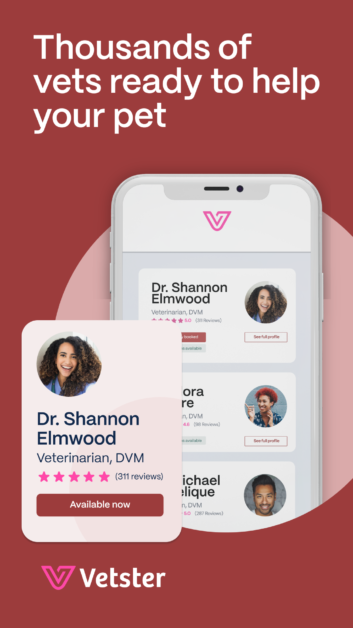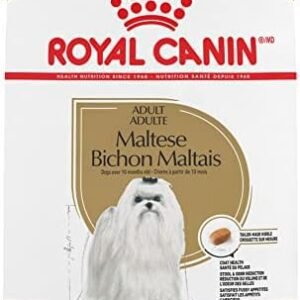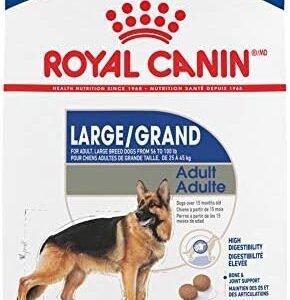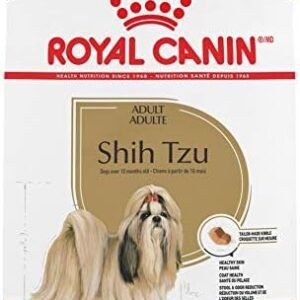Canine parvovirus (CPV) is a highly contagious virus that mainly affects puppies, causing severe stomach problems. Sadly, it can be deadly, killing up to 30% of infected dogs. The CPV vaccine is key to keeping dogs safe from this dangerous disease. This article will cover the CPV vaccine’s importance, how it’s given, possible side effects, and how it compares to other vaccines.
Key Takeaways:
- The CPV vaccine is crucial for protecting dogs against this highly contagious and potentially deadly virus.
- Puppies should be vaccinated starting at 4 weeks of age with boosters every 2 weeks until 20 weeks for optimal protection.
- Evidence suggests that a single modified-live CPV vaccine can provide lifelong immunity in adult dogs.
- Routine deworming is recommended in shelters to prevent the spread of CPV.
- Diagnostic tests like ELISA and PCR can quickly identify CPV infection and aid in diagnosis.
Table of Contents
What is Canine Parvovirus?
Canine parvovirus type 2 (CPV-2) is a highly contagious virus that causes a serious disease in dogs. It first appeared in Europe around 1976 and quickly spread globally, leading to a worldwide outbreak. This virus is similar to the feline panleukopenia virus and likely came from genetic changes that let it infect dogs.
Cause of Canine Parvovirus Infection
The CPV virus attacks cells that grow quickly, like those in the bone marrow and gut lining. This causes severe stomach problems and weakens the immune system. Dogs get very sick from other infections because of this.
Symptoms and Complications
Symptoms include feeling very tired, being sad, not wanting to eat, having a high fever, vomiting, and diarrhea that might be bloody. Puppies are especially at risk. Young dogs can also get heart problems from the virus, which can make their heart work poorly.
If not treated, CPV can lead to dehydration, shock, and sepsis, and can be deadly within 48-72 hours. Some dog breeds like Rottweilers and Doberman Pinschers are more likely to die from it. Early detection and treatment are key to helping dogs recover from this virus.
Many dogs can get better with the right care, but parvovirus is still a big threat. It’s especially dangerous for puppies and young dogs that haven’t been vaccinated.
Diagnosis of Canine Parvovirus
Diagnosing canine parvovirus (CPV) is key for effective treatment. Vets use several tests to find the virus in dogs.
Tests for Detecting CPV Infection
The fecal ELISA test is a common way to spot CPV. It looks for parvovirus in a dog’s poop. This test is quick and pretty accurate.
Another test is the fecal PCR. It’s more precise and can tell which CPV strain it is.
Vets also check for signs like a low white blood cell count. This could mean CPV infection. But, more tests might be needed to confirm the virus and rule out other health issues.
| Test | Description | Advantages | Disadvantages |
|---|---|---|---|
| Fecal ELISA | Detects parvovirus antigens in the dog’s stool | Quick, relatively accurate | Less sensitive than PCR |
| Fecal PCR | Identifies the specific strain of CPV | More sensitive, accurate | Requires sending sample to a lab |
| Low White Blood Cell Count | Clinical indicator of CPV infection | Can help guide diagnosis | Not a definitive test |
With these tests, vets can tell if a dog has CPV. They can then give the right treatment and care.
Treatment Options for CPV Infection
When dogs get CPV, they need supportive care and help with symptoms. They often need to stay in the hospital to get fluids and nutrients through an IV. Their digestive system can’t handle these things on its own.
Sometimes, dogs need blood transfusions to increase their blood cell count. Antibiotics are given to fight off secondary infections. Medicines can also help with vomiting and diarrhea. With quick and intense care, many dogs can beat the virus, but it’s a serious illness.
About 85–90% of parvo puppies that get hospitalized and receive care survive. But, if not treated, CPV-2 can be deadly, with a 90% mortality rate. With the right treatment, survival chances are between 60% to 90%.
The cost to treat parvovirus in dogs can be high, from a few hundred to several thousand dollars. On average, it costs between $1,000-$2,100. But, getting a parvo vaccine costs only $30 to $50. Vaccination is much cheaper than treating the infection.
After getting over parvo, dogs should eat a special diet. It should be easy to digest and prescribed by a vet. The risk of death for puppies is highest 24–72 hours after symptoms start. This shows how important quick vet care is.
| Treatment Aspect | Details |
|---|---|
| Intravenous fluids and nutrients | Crucial to replace lost fluids and provide essential nutrients |
| Blood transfusions | May be required to boost low blood cell counts |
| Antibiotics | Used to fight secondary bacterial infections |
| Anti-vomiting and anti-diarrheal medications | Help control the common gastrointestinal symptoms |
| Bland, easily digestible diet | Recommended for dogs recovering from CPV infection |
With quick and intense treatment, many dogs can get better from parvovirus. It’s a serious illness but dogs have a better chance of surviving with vet care.
Prevention: Importance of CPV Vaccine for Dogs
Vaccination is the best way to stop dogs from getting canine parvovirus (CPV). The CPV vaccine is a must-have for all dogs, no matter where they live or their situation. It’s important to keep up with vaccinations because not having them can leave puppies at risk of a deadly virus.
Vaccination Protocols and Schedules
Puppies start getting CPV shots at 6-8 weeks old. They need boosters every 2-4 weeks until they are 16 weeks old. This helps them build strong immunity, as their mom’s antibodies might not work well with the vaccine at first.
Adult dogs need a booster shot within a year of their first series. Then, they need boosters every three years to keep being protected.
Even with vaccines, CPV is still a big threat to young dogs. In Australia, about 4.12 cases of CPV happen per 1,000 dogs. This shows we must keep up with vaccinations to keep our dogs safe.
“Dogs administered MLV vaccines were protected against challenge with virulent CPV as early as 3 days post-vaccination.”
Modified live virus (MLV) CPV vaccines are usually better than inactivated ones because they give stronger and longer immunity. But, MLV vaccines are not safe for wildlife, puppies under 4-6 weeks, or pregnant dogs because they can have bad effects.
Keeping up with CPV vaccination is key to keeping dogs safe from this very contagious and possibly deadly disease.
Types of CPV Vaccines
Protecting dogs against canine parvovirus (CPV) involves two main vaccine types: modified live virus (MLV) vaccines and inactivated vaccines. Each type has its own benefits and is best for certain situations.
Modified Live Virus (MLV) Vaccines
MLV CPV vaccines are the top choice for regular dog shots. They contain a weakened parvovirus that can still replicate. This weak virus triggers a strong immune response, giving dogs lasting protection. The vaccines often include the CPV-2 and CPV-2b strains.
Inactivated Vaccines
Inactivated CPV vaccines are less common. They have killed parvovirus particles that don’t replicate in the body. These vaccines are safer but need more shots to keep dogs protected. They’re mainly for exotic animals and pregnant dogs, as MLV vaccines aren’t safe for them.
| Vaccine Type | Mechanism of Action | Advantages | Disadvantages |
|---|---|---|---|
| Modified Live Virus (MLV) | Weakened, replicating virus |
|
|
| Inactivated | Killed or inactivated virus particles |
|
|
The choice between MLV and inactivated CPV vaccines depends on the dog’s needs and the vet’s advice. Both vaccines are crucial for fighting canine parvovirus.
Immunization Failures and Challenges
Canine parvovirus (CPV) is a big problem in young dogs, even with vaccines. Many puppies don’t get full protection because of something called maternal antibodies. These antibodies come from the mom and can block the puppy’s vaccine from working right.
This means puppies might get sick, even if they’ve had their shots. They’re not ready to fight off the virus on their own yet.
Interference by Maternal Antibodies
Maternal antibodies can mess with how well CPV vaccines work. They give short-term protection but can also stop the vaccine from doing its job. This is a big problem for puppies trying to stay safe from CPV.
| Key Factors Affecting CPV Vaccine Failures |
|---|
|
Scientists are working on new vaccines to beat the problem of maternal antibodies. They want to make vaccines that work even when maternal antibodies are high. Finding a solution is key to keeping dogs safe from CPV.
“The interference of maternally derived antibodies leaves a window of susceptibility to infection that may last until an animal receives its annual/tri-annual booster vaccination.”
cpv vaccine for dogs
The CPV vaccine is key to protecting dogs from the contagious and deadly canine parvovirus. It’s given with other vaccines for distemper, adenovirus, and parainfluenza. It’s vital to keep up with the vaccination series and boosters to fight this serious disease.
Puppies under 16 weeks need one vaccine dose every 3-4 weeks from 6-8 weeks old. Dogs over 16 weeks get two doses, 3-4 weeks apart. After a year, dogs need a booster every 3 years for CPV, CDV, and CAV-2.
Parvovirus (CPV) is a common and deadly disease in unvaccinated dogs. It causes diarrhea, vomiting, and dehydration. Getting the CPV vaccine is key to preventing this illness.
“Parvovirus is highly contagious and can affect any dog, with young puppies and geriatric dogs being most at risk.”
The DA2P-CPV vaccine protects against distemper, adenovirus, parvovirus, and parainfluenza. Keeping up with vaccinations and boosters keeps dogs healthy and safe from parvovirus.
Onset and Duration of Immunity
The CPV vaccine starts protecting dogs quickly and keeps them safe for a long time. Studies show that dogs can fight off CPV as early as 3 days after getting an MLV vaccine. This fast protection is key to keeping puppies and dogs safe from a deadly disease.
This vaccine keeps dogs safe for years after the first shots. It’s different from getting the disease naturally, which gives lifelong immunity. Yet, the vaccine still protects dogs for a long time.
Knowing how long does the cpv vaccine last and how soon does the cpv vaccine work is key for pet owners. It helps keep dogs safe from canine parvovirus. The vaccine’s quick start and long-lasting effect are vital in fighting this serious disease.
“The duration of immunity provided by most modern, modified live virus (MLV) core vaccines is many years.”
In conclusion, the CPV vaccine is a top choice for protecting dogs from canine parvovirus. It quickly starts protecting and keeps it up for a long time. Pet owners can be sure their dogs are ready to face this serious disease.
Considerations for Puppy Vaccination
Puppies are very open to getting sick with canine parvovirus (CPV) because their immune systems are still growing. Maternal antibodies can make CPV vaccines less effective, leaving a gap in protection. This gap is where the puppy is not covered by the mother’s antibodies or its own vaccine immunity.
To keep puppies safe from this dangerous disease, they should get a series of CPV shots. Start these shots when the puppy is 6-8 weeks old. Then, give them boosters every 2-4 weeks until they are 16 weeks old. This schedule makes sure puppies get enough immunity before the mother’s antibodies go away.
Optimizing Maternal Immunity and Vaccination
- Begin puppy cpv vaccination at 6-8 weeks of age
- Administer booster shots every 2-4 weeks until 16 weeks old
- Carefully time vaccinations to provide protection before maternal antibodies diminish
- Ensure vaccinating puppies with maternal antibodies receive the full series for best immunity
By sticking to this vaccination plan, puppies can build their own immunity against CPV. This ensures they are safe when the mother’s antibodies wear off. It’s very important to time vaccinations right to give puppies the best chance of staying healthy.
“Vaccination is an essential aspect of preventive pet healthcare and a crucial way to uphold herd immunity against infectious diseases in dogs.”
Vaccine Safety and Adverse Reactions
When it comes to the cpv vaccine for dogs, safety is key. The good news is that cpv vaccines are generally safe for dogs. They have a low rate of bad reactions. The most common modified live virus (MLV) vaccines work well and are easy on dogs.
But, we need to be careful. MLV vaccines aren’t good for wildlife, puppies under 4-6 weeks, or pregnant dogs. They could cause vaccine-associated adverse effects. These effects might include fever, tiredness, and rare nervous system issues.
Even with these rare bad reactions, the benefits of CPV vaccination are much bigger. The vaccine is key to keeping dogs safe from the deadly canine parvovirus. If not treated, this virus can be very harmful. When given right, cpv vaccines are safe and work well to protect our dogs.
“Vaccines have dramatically reduced the incidence of severe and fatal diseases in companion animals such as canine distemper, canine parvovirus, infectious canine hepatitis, and feline panleukopenia.”
It’s true that bad reactions can happen with any vaccine, but they’re not common. These reactions might be local, like pain or swelling, or they could be more widespread, like fever or tiredness. Rarely, dogs might have serious issues like autoimmune problems or vaccine-related tumors.
To make sure the cpv vaccine is safe and works, it’s important to follow the guidelines. This way, pet owners can trust that their dogs are protected and reduce the chance of bad reactions.
In summary, while cpv vaccines are generally safe for dogs, knowing about possible side effects is key. By working with vets and sticking to the vaccination plan, pet owners can keep their dogs healthy and happy.
Comparing CPV Vaccines
Choosing the right vaccine for dogs against the canine parvovirus (CPV) is key. We look at three main things: how well they work, their cost, and possible side effects.
Efficacy
Modified live virus (MLV) vaccines work better and protect longer than inactivated ones. In a study, 96% of puppies in the MLV group tested positive for CPV-2 by 7 weeks. This was much better than other groups.
The MLV group also had higher levels of protection at 14 and 28 days. This shows how effective MLV vaccines are.
Cost and Side Effects
CPV vaccines are not too expensive, especially when you think about the cost of treating the disease. Most dogs don’t have bad reactions to these vaccines. They might feel a bit feverish or tired.
In some cases, like with exotic animals or pregnant dogs, inactivated vaccines might be safer. They have fewer risks of bad reactions.
| Vaccine Type | Efficacy | Cost | Side Effects |
|---|---|---|---|
| Modified Live Virus (MLV) | Higher immunogenicity, longer-lasting protection | Generally affordable | Mild side effects (fever, lethargy) |
| Inactivated | Lower immunogenicity, requires more frequent boosters | Generally affordable | Mild side effects, may be preferred for certain situations |
CPV vaccines are a must for dogs. They offer great benefits and are worth the cost and risks. Knowing the differences between vaccines helps vets and owners make the best choices for their dogs.
Boosters and Revaccination
To keep dogs safe from canine parvovirus (CPV), they need regular booster shots. After the first series of shots for puppies, a booster is needed within a year. Then, dogs get boosters every three years.
This schedule keeps dogs’ antibody levels high to fight off CPV. It’s important to give all the booster shots as advised. Without them, dogs can get very sick from the parvovirus.
The first puppy shots are given every 3-4 weeks, starting at 6-8 weeks old. The last shot is given at 16 weeks or later. For older dogs, they get two doses of the CPV vaccine, then boosters every three years.
Following the vaccine instructions means the antibodies last 12-48 months against CPV. Before, dogs got shots every year, but now, we’re not sure if they really need them every year.
In puppies, the vaccine protects against a certain type of CPV even five weeks after the second shot. This shows how important it is to finish the vaccine series and get booster shots on time to protect against this virus.
| Vaccine | Initial Puppy Vaccination | Booster Vaccination |
|---|---|---|
| Canine Parvovirus (CPV) | One dose every 3-4 weeks, starting from 6-8 weeks, final booster at no sooner than 16 weeks | Booster every 3 years |
| Rabies | Single dose at 12 weeks | Booster one year later, then every 3 years |
| Leptospira | Two doses, with boosters annually | Booster every year |
| Canine Parainfluenza and Bordetella (Kennel Cough) | Mucosal vaccination with live avirulent bacteria | As needed for boarding |
Keeping up with the cpv vaccine booster schedule is key for long-term protection against this serious disease. Dogs need to get the how often should dogs get the cpv vaccine to stay safe.
Herd Immunity and Population Coverage
Getting a lot of dogs vaccinated is key to herd immunity against canine parvovirus. When many dogs are vaccinated, it’s harder for the virus to spread. This protects not just the vaccinated dogs but also those who can’t get shots, like very young puppies or dogs with weak immune systems. Keeping robust vaccination rates is crucial for controlling and maybe even wiping out canine parvovirus in the future.
Herd immunity means that when a lot of people or animals in a group get vaccinated, they all help protect each other. This happens because when many are immune, the virus has fewer chances to spread. It slows down the virus and stops it from spreading too much.
| Infectious Disease | Basic Reproduction Number (R0) | Herd Immunity Threshold |
|---|---|---|
| Canine Distemper Virus | 1.26 | ~67% |
| Rabies (Dogs, Tanzania) | 1.05 | ~67% |
| Rabies (Dogs, Hong Kong) | 1.27 | ~67% |
| Rabies (Foxes, Italy) | 1.26 | ~67% |
| Common Feline Infectious Diseases | Less than 3 | ~67% |
The herd immunity threshold is about 67% for diseases with an R0 over 3. This means if 67% of dogs get the CPV vaccine, the virus won’t spread much. It will have a hard time infecting the dogs who aren’t vaccinated.
Keeping a high rate of CPV vaccination is vital for herd immunity. This can protect all dogs and might even lead to getting rid of the virus in the future.
Hygiene and Environmental Control
Keeping things clean and controlling the environment is key to stop parvovirus from spreading. This virus can live for a long time outside, making it hard to get rid of. So, it’s important to keep dogs safe by vaccinating them.
Cleaning and disinfecting against parvovirus is a must in places where sick dogs have been. This means cleaning food and water bowls, beds, and all surfaces well. The virus can spread through things like doorknobs or pet fur.
Common household cleaners don’t kill parvovirus easily. Quaternary Ammonium Disinfectant isn’t good against it. But, bleach (5% Sodium Hypochlorite) and Potassium Peroxymonosulfate Disinfectant work well against it if used right.
Keeping sick dogs away from others helps stop the virus from spreading. Washing hands after touching dogs is also key to not spreading the virus.
Using vaccines and strict infection control is the best way to keep dogs safe from this bad disease. Cleaning and disinfecting places inside and outside is very important to lower the risk of spreading parvovirus.
“There is no guaranteed time frame for completely eliminating parvovirus from a home or yard environment.”
By doing these important steps, dog owners can help disinfect against parvovirus and prevent parvovirus spread at home and in the community.
Conclusion
The CPV vaccine is key to protecting dogs from a deadly virus. It’s important to know how vaccines work and the challenges they face. This helps pet owners and vets make sure dogs get the vaccine’s full benefits.
Combining vaccines with good hygiene and clean environments is best for preventing the virus. This approach helps stop outbreaks of this tough disease.
By taking steps to prevent it, we can greatly reduce the virus’s effects. A study in BMC Veterinary Research shows how we’re working to understand CPV better. This helps us make vaccines more effective.
Staying informed and taking action helps keep our dogs safe from this virus. The CPV vaccine is a vital part of keeping dogs healthy.
Through ongoing research and responsible vaccination, we aim for a future where CPV is less of a threat. This will help protect our pets from this serious disease.



